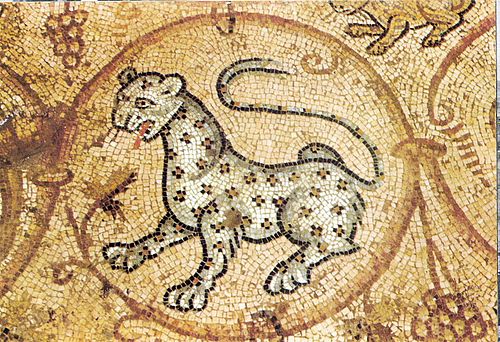Ancient Ma'on synagogue in Israel's southern Negev features mosaic floor
Historic synagogue testifies to existence of Jewish community in the Christian town

The Jewish National Fund, KKL-JNF, recently welcomed guests to visit the ancient Jewish synagogue in Ma'on, located in Israel's southern Negev desert.
"From north to south, the Land of Israel is filled with pieces of ancient Jewish history. The ancient synagogues tell the Jewish story spanning thousands of years - about vibrant culture, community, and our ancestors who lived here centuries and millennia ago,” said KKL-JNF Chairwoman Ifat Ovadia Luski.
“I invite the public to come and learn through the trails and sites offered by KKL-JNF. The summer months provide a great opportunity to combine a trip with Jewish heritage and rich history."
The Ma’on synagogue, first discovered in 1957 on the southern end of Israel, is one of three ancient synagogues discovered so far in the western Negev region.
The town of Ma’on is believed to have existed during the late Roman period and in the Byzantine period, during the fifth and seventh centuries C.E., some 1,500 years ago.
Ma'on, or Manois, was considered to be a large town, mostly inhabited by Christians. While most likely under Byzantine rule at that time, the ancient synagogue is evidence that a Jewish community existed, with the religious center being the most significant expression of their independence.
The synagogue faces northeast, towards Jerusalem, according to Jewish tradition, and was thought to have been built on a Basilica plan, with an ancient mosaic floor in the center and two side aisles paved with stone. The ceiling was believed to have been made of wooden beams and clay. The walls of the synagogue are thought to have been built with rectangular stones that were placed on stone foundations. According to inscriptions, a cavalry unit from the Western Balkans may also have been stationed in Ma'on for a time.
The synagogue was centered within a larger infrastructure which included courtyards and water cisterns. Portions of the water channel collection system, a well, and an ancient Jewish ritual bath, or Mikveh, have all been restored and are on currently display at the site.
A magnificent mosaic floor was discovered at the site. While portions of the floor suffered damage, the undamaged mosaic segments were preserved during a salvage excavation. At that time, the mosaic was lifted from its original foundation and carefully cleaned. A new foundation was installed and the mosaic was securely attached.

In addition to the synagogue, the mosaic floor and structural additions, several small objects were found, including coins and artifacts made from bone and metal that may have been associated with the Torah Ark. Fragments of glass and ceramic lamps, as well as dozens of amulets, were also discovered.
The Keren Kayemeth LeIsrael-Jewish National Fund is a non-profit organization founded in 1901 to develop land in Israel and preserve the country's natural and cultural heritage.

The All Israel News Staff is a team of journalists in Israel.














